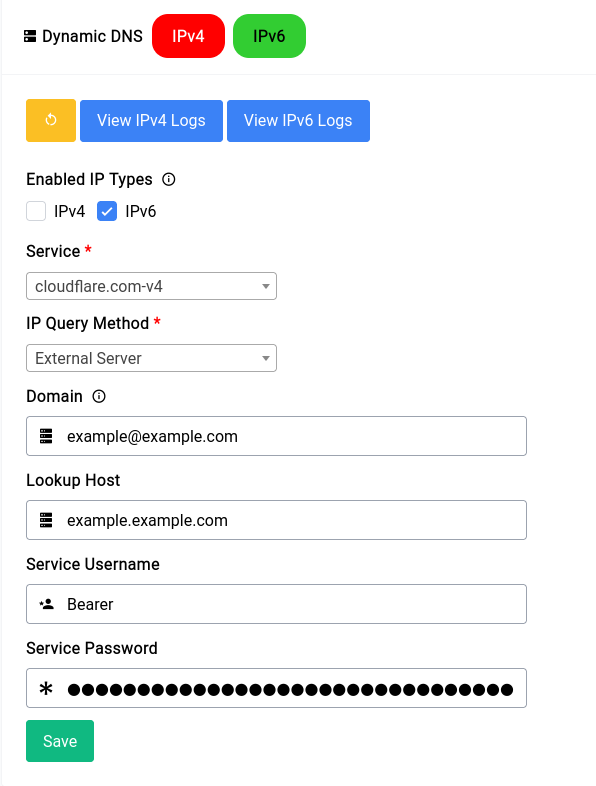This is not the latest version of this documentation, for the one that is upto date, please see the latest version (2.7.0)
Dynamic DNS
Dynamic DNS is a service that allows you to point a domain name to your home network's public IP address. This is useful for accessing services hosted on your home network from the internet, or for accessing your router's web interface from anywhere.
Setting up the Dynamic DNS service is pretty straight forward.

Services - Dynamic DNS - Addition
In this typical configuration. We’re setting up an IPv6 only Dynamic DNS Service. It’s a really good idea to do only IPv6 if you have a CGNAT IP.
Let's go over the configuration options:
Enabled IP Types
This option allows you to choose which IP types you want to use for your Dynamic DNS service. You can choose between IPv4, IPv6 or both. Please remember the note about CGNAT above.
Service
Difuse offers over 70 different service providers for Dynamic DNS. You can choose the one that you prefer.
IP Query Method
This option allows you to choose how Difuse will get your public IP address. You can choose between:
- Interface - This option will get your public IP address from the interface that you choose. This is the recommended option.
- External - This option will get your public IP address from an external service. This is useful if you're behind a CGNAT or DHCP and don't have a public IP address on your router's WAN interface.
Domain
You can enter in the domain or subdomain here, for cloudflare we need to specify (for a subdomain) with an @ symbol. For example, if you want to use example.example.com you would enter [email protected] in the domain field.
This depends on your service provider so a little bit of trial and error might be needed. Usually the domain name or subdomain name just works as is.
Lookup Host
This is the host that will be used to lookup your public IP address. This is usually just the plain domainname like example.com or example.example.com.
Credentials
Now both the service username and password should be supplied by you that is specific to your configuration. In our case it’s the username Bearer and an API token for the password that looks something like this:
Once everything is filled up you can just click on Save and you should be good to go.
If you want to restart the service you can just click on the yellow button with the restart symbol on it.

